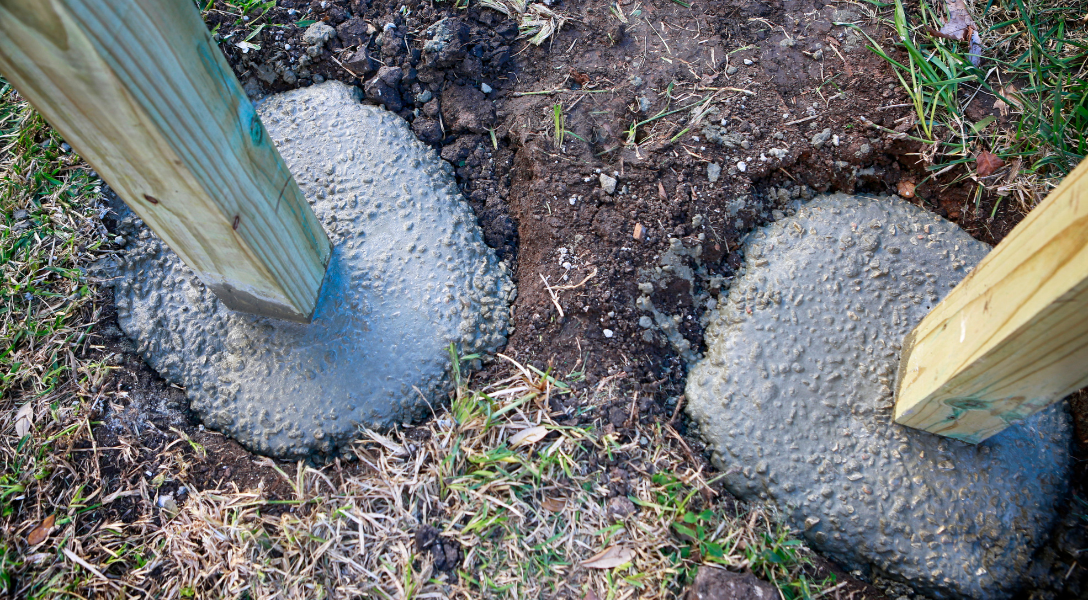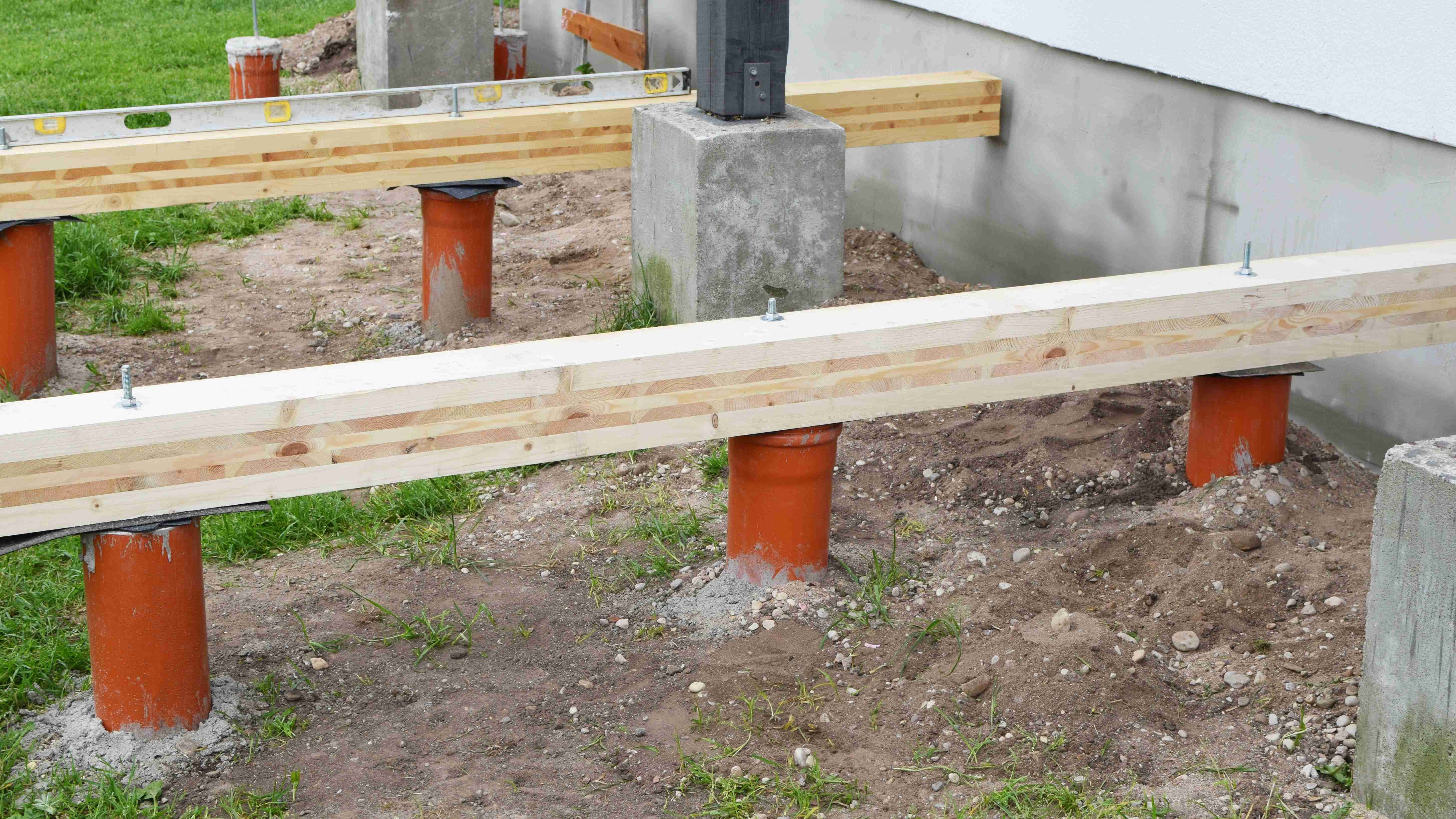Deck Footings Demystified: Your Blueprint for a Safe, Long-Lasting Outdoor Haven
Deck Footings Demystified: Your Blueprint for a Safe, Long-Lasting Outdoor Haven
Blog Article
Selecting the Right Deck Footings for Stability and Sturdiness
When it involves developing a deck, one of one of the most important decisions you will certainly make is selecting the right footings for security and durability. The long life and security of your deck depend heavily on the kind of footings you pick, as they offer the vital support and stability to withstand the examination of time. With a myriad of options offered, it can be overwhelming to figure out which footings are best fit for your specific demands. In this conversation, we will check out the various kinds of deck grounds, take into consideration the crucial variables to evaluate when making a choice, and look into the advantages and disadvantages of different choices. By the end, you will certainly have a clearer understanding of the options at hand and be far better geared up to make an educated decision for your deck job.
Sorts Of Deck Footings
These footings are composed of a round opening loaded with concrete, which supplies a strong structure for the deck articles. Concrete pier footings are fairly simple to set up and provide exceptional stability, making them a prominent option for lots of deck jobs.
These footings are mounted by screwing them right into the ground, which creates a secure structure for the deck. They also allow for easy modification and progressing of the deck if required.
Alternatively, some builders go with precast concrete grounds. These grounds are made of durable concrete and can be found in numerous shapes and dimensions to accommodate different deck designs. Precast concrete grounds are convenient to mount and offer a stable base for the deck framework.
Lastly, an additional choice is the post-in-anchor ground system. This kind of ground includes driving a steel anchor right into the ground and attaching it to the deck blog post. It uses flexibility in regards to placing the deck articles and appropriates for decks with lightweight frameworks.
When selecting the best sort of deck footing, it is necessary to consider variables such as soil problems, deck load, and regional building ordinance (Deck Footings). Consulting with an expert contractor or architectural engineer can assist make certain the suitable ground is chosen for a secure and safe deck
Aspects to Take Into Consideration When Selecting Grounds
When selecting the suitable footings for a deck, it is critical to thoroughly think about numerous factors such as soil problems, deck tons, and adherence to neighborhood building regulations. These factors play a considerable function in making certain the security and toughness of the deck framework.
Among the primary factors to consider is the soil conditions. The type of soil on which the deck will be developed establishes the kind of grounds called for. Decks developed on loose or sandy soils may require deeper grounds to give adequate assistance and protect against settling. On the various other hand, decks developed on clay or expansive soils may call for grounds that can suit the soil's tendency to expand and contract.
One more vital factor is the deck tons. The weight of the deck, including the products utilized and any type of potential real-time tons such as furniture or events, have to be thought about when choosing grounds. The grounds have to be made to bear the weight of the deck and distribute it equally to avoid any architectural problems or failures.
Finally, adherence to local building regulations is vital. Building regulations differ from region to area, and it is important to follow the details requirements established by the regional authorities. Deck Footings. These codes make certain that the deck is developed securely and satisfies the necessary criteria for structural honesty and load-bearing capacity
Concrete Grounds: Pros and Disadvantages

Concrete grounds offer a number of benefits and negative aspects when used as the foundation for a deck. On the favorable side, concrete grounds provide exceptional security and longevity.
Another benefit of concrete grounds is their convenience. They can be put right into various sizes and shapes to fit numerous deck layouts and setups. Concrete grounds can be personalized to fit the particular requirements and requirements of the deck structure.
Nevertheless, there are likewise some drawbacks to using concrete grounds. One significant drawback is the expense and labor associated with their installation. Concrete grounds need excavation and usually require the support of heavy equipment. This can boost the general cost of the deck task and might need professional aid.

Helical Piers Vs. Sonotubes: Which Is Better?
In taking into consideration the structure choices for a deck, the contrast in between helical piers and sonotubes is critical in establishing the premium selection. They are turned into the ground using hydraulic machinery, giving a secure and sturdy foundation for the deck.
When it concerns stability and sturdiness, helical piers have the top hand. The helical plates on the piers produce a strong from this source grasp with the soil, stopping any home type of movement or changing of the deck. This is particularly helpful in areas with unpredictable or moving soil problems. Sonotubes, on the other hand, count only on the concrete filling up for security, which may not provide the very same degree of stamina and resistance.
In regards to setup, helical piers are relatively easier and faster to set up contrasted to sonotubes. The hydraulic machinery utilized to twist the piers right into the ground ensures a fast and reliable procedure. Sonotubes, on the other hand, need digging holes and putting concrete, which can be labor-intensive and taxing.
Additionally, helical piers are a more functional choice. If required, they can be used in various soil problems and can be readjusted or reinforced. Sonotubes, on the other hand, might call for additional support, such as rebar, in specific soil problems or areas with high lots requirements.
Selecting the Right Footings for Your Deck's Dimensions
For ideal architectural honesty, it is necessary to carefully select the suitable footings that line up with the measurements of your deck. The measurements of your deck, including its height, size, and size, play a significant role in identifying the type and size of footings required.
When selecting grounds for your deck, it is very important to consider the load-bearing capacity of the dirt. The weight of the deck, incorporated with the weight of any kind of furnishings or people on it, puts in a significant force on the footings (Deck Footings). It is crucial to pick grounds that can effectively sustain this weight without moving or sinking over time.
Bigger decks with greater measurements require bigger footings to give adequate stability and assistance. The form of the footings, whether they are square or round, depends on the design and design of the deck.
Conclusion
In verdict, selecting the right deck grounds is important for guaranteeing security and longevity. Aspects such as the kind of grounds, the deck's check my reference measurements, and the pros and disadvantages of different options must be considered. Concrete grounds offer stamina and longevity, yet may be extra costly and time-consuming to mount. Helical piers and sonotubes have their very own benefits and disadvantages. Eventually, picking the appropriate footings for your deck's certain needs is essential for a long-lasting and successful structure.
These footings consist of a cylindrical hole filled up with concrete, which supplies a strong structure for the deck blog posts. Concrete pier grounds are fairly very easy to mount and supply excellent stability, making them a popular choice for several deck tasks.
Precast concrete grounds are hassle-free to mount and give a secure base for the deck framework.
It provides versatility in terms of placing the deck messages and is suitable for decks with lightweight structures.
Concrete grounds supply numerous benefits and downsides when utilized as the foundation for a deck.
Report this page